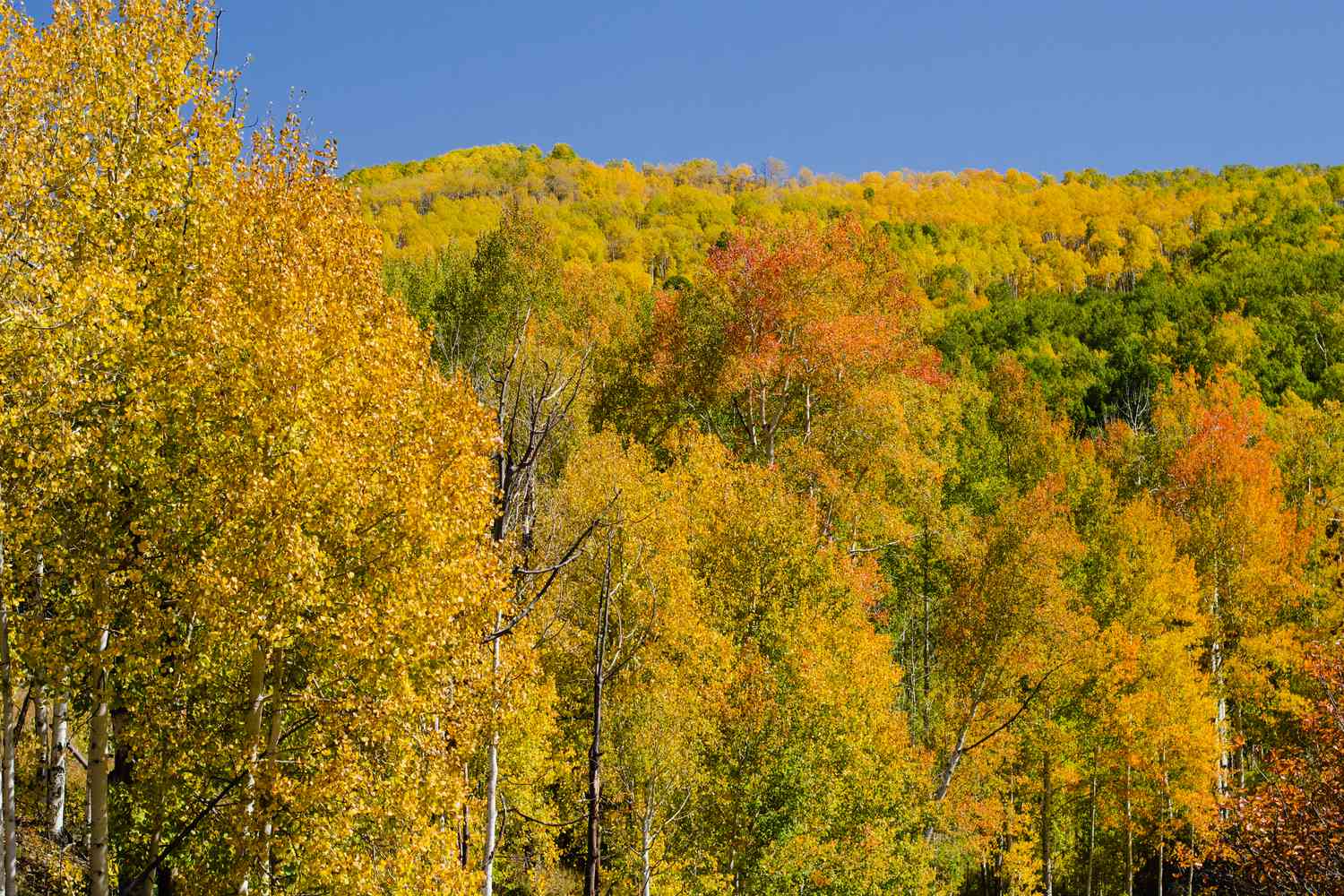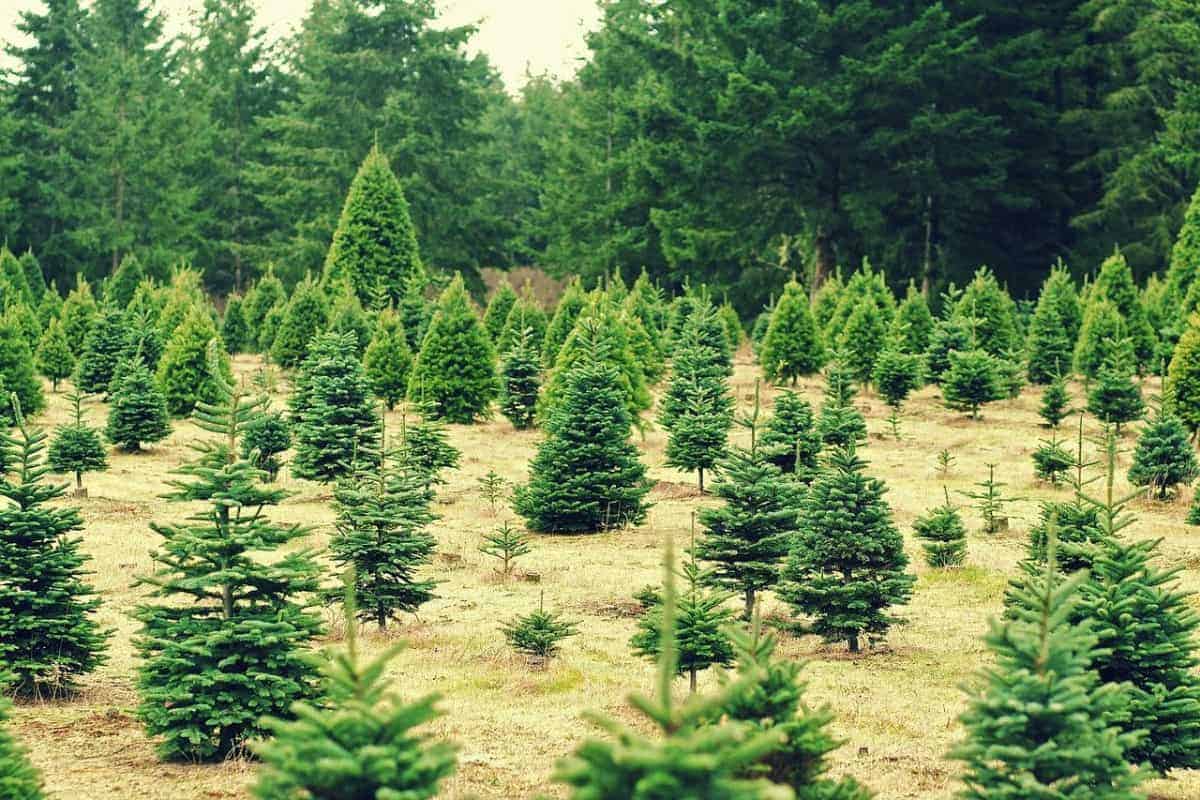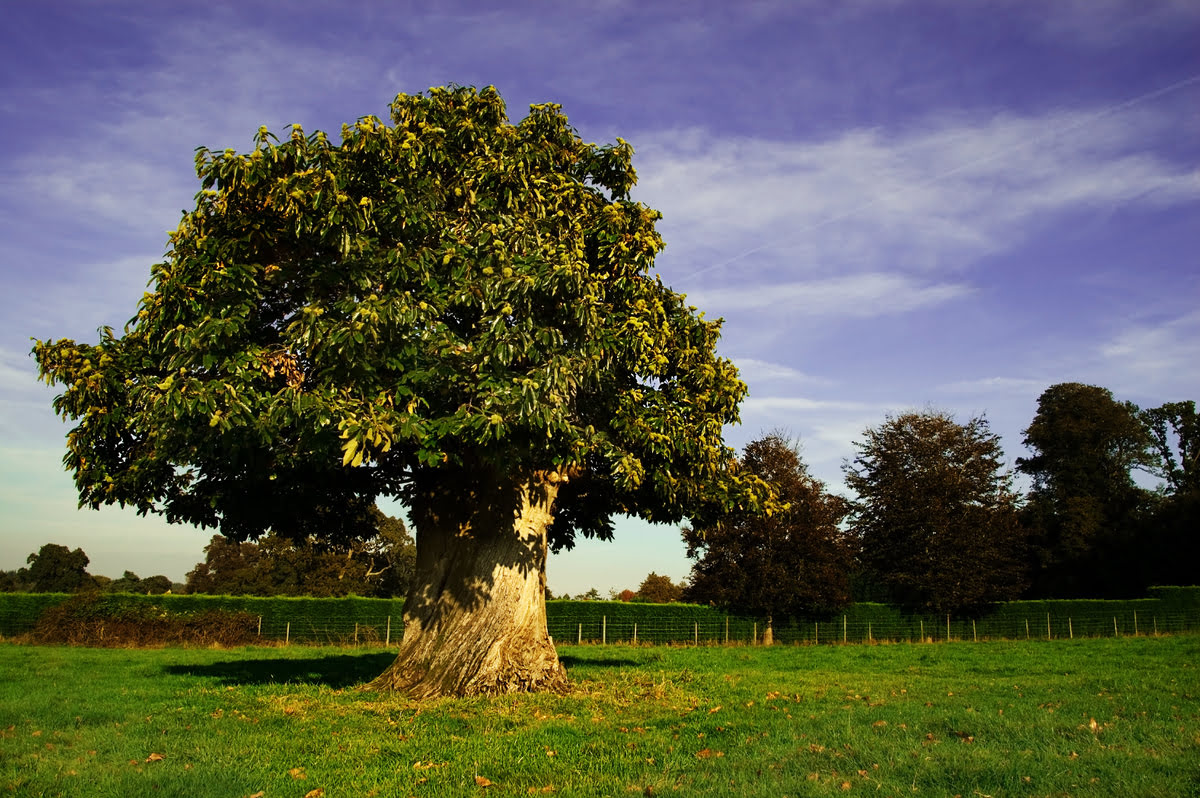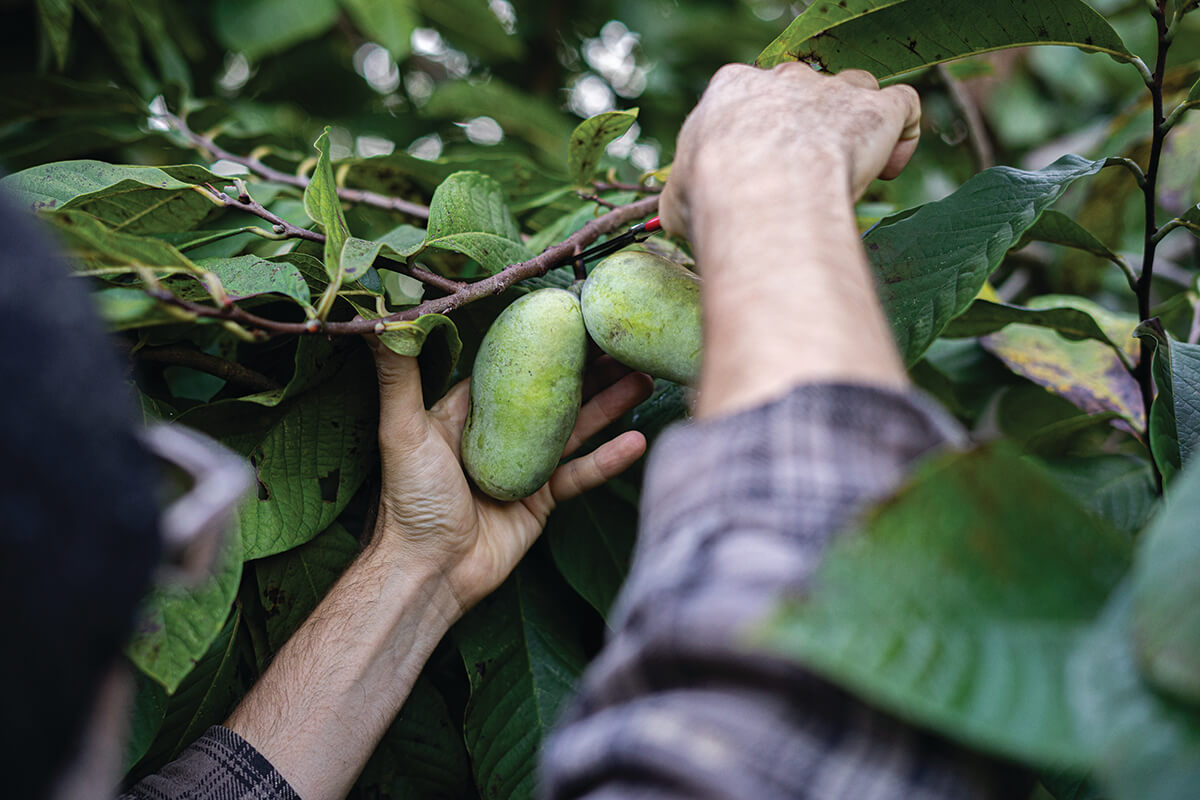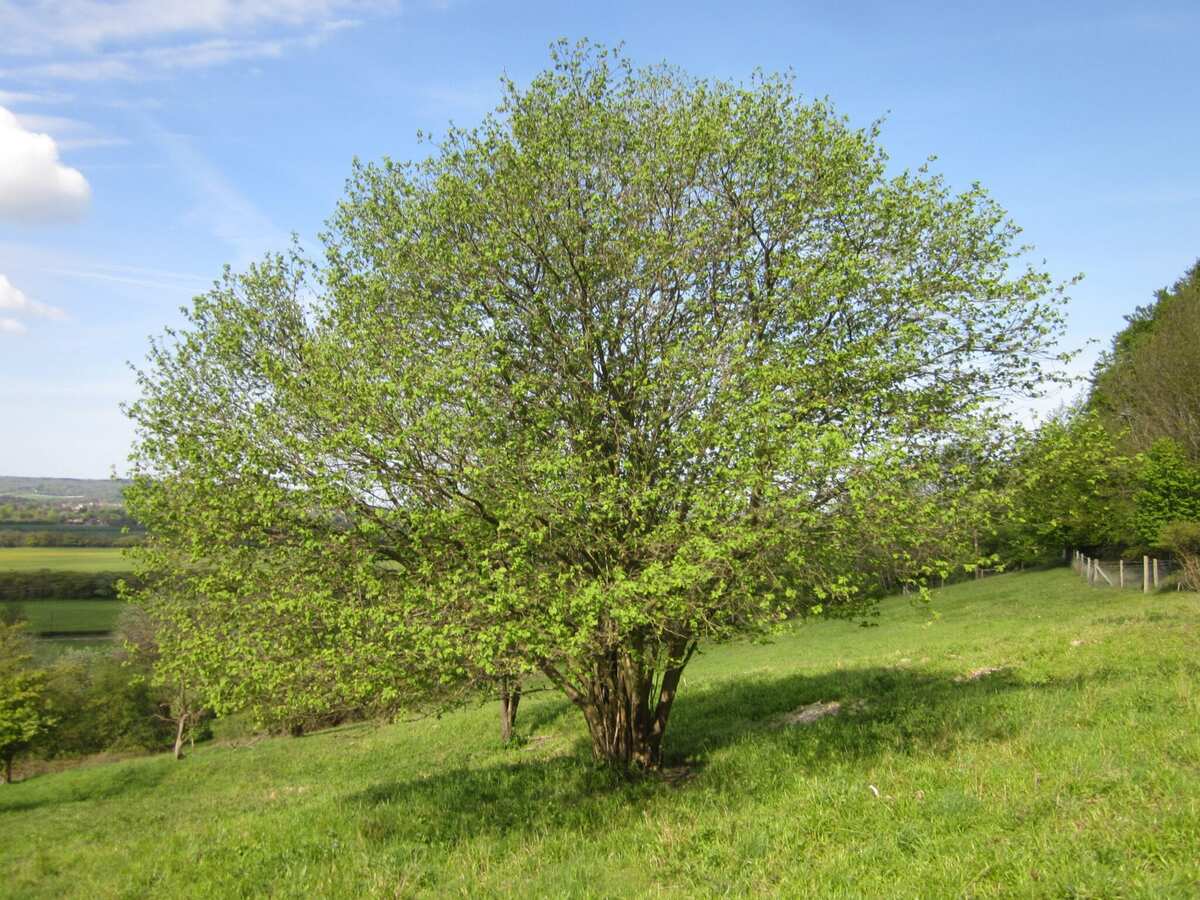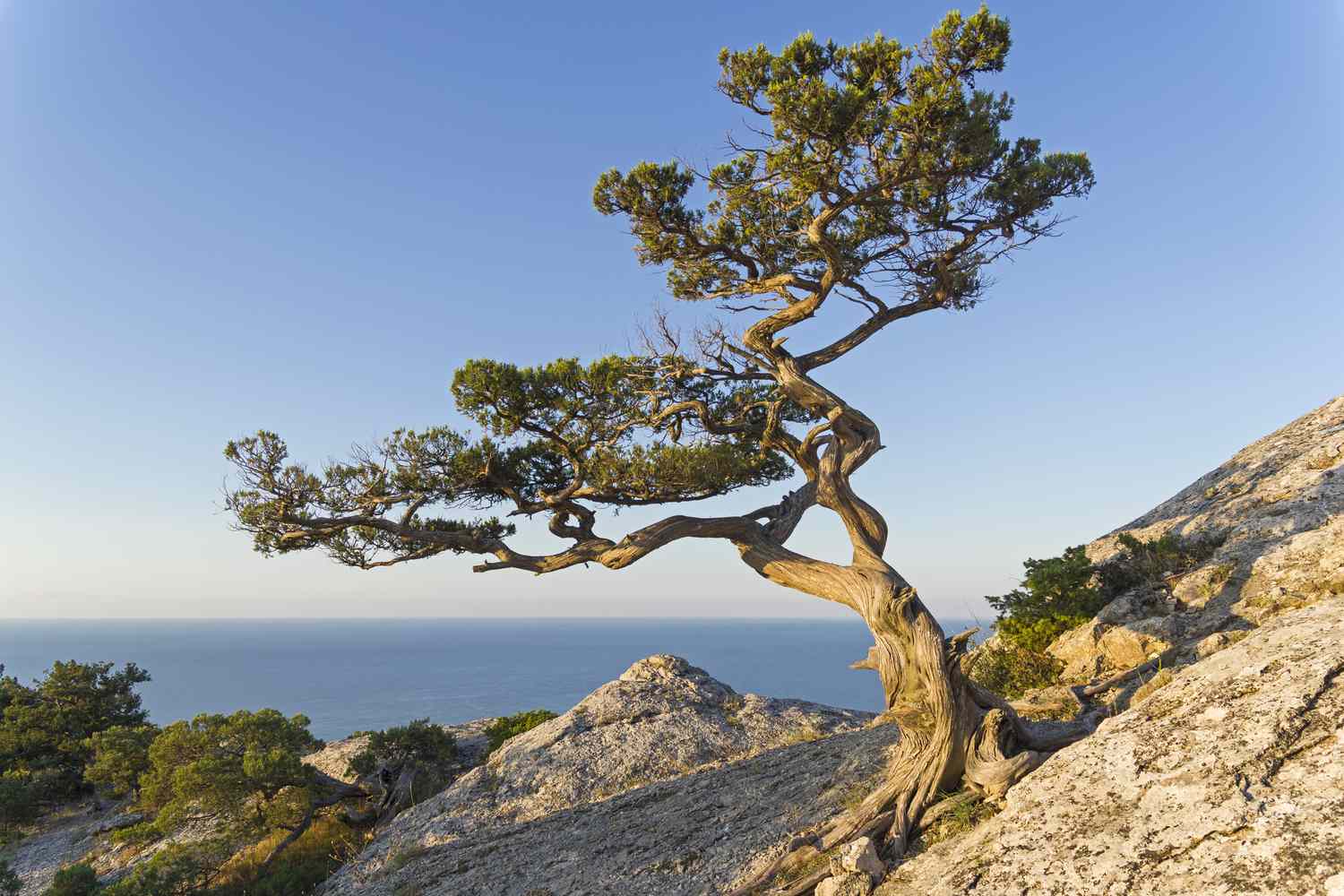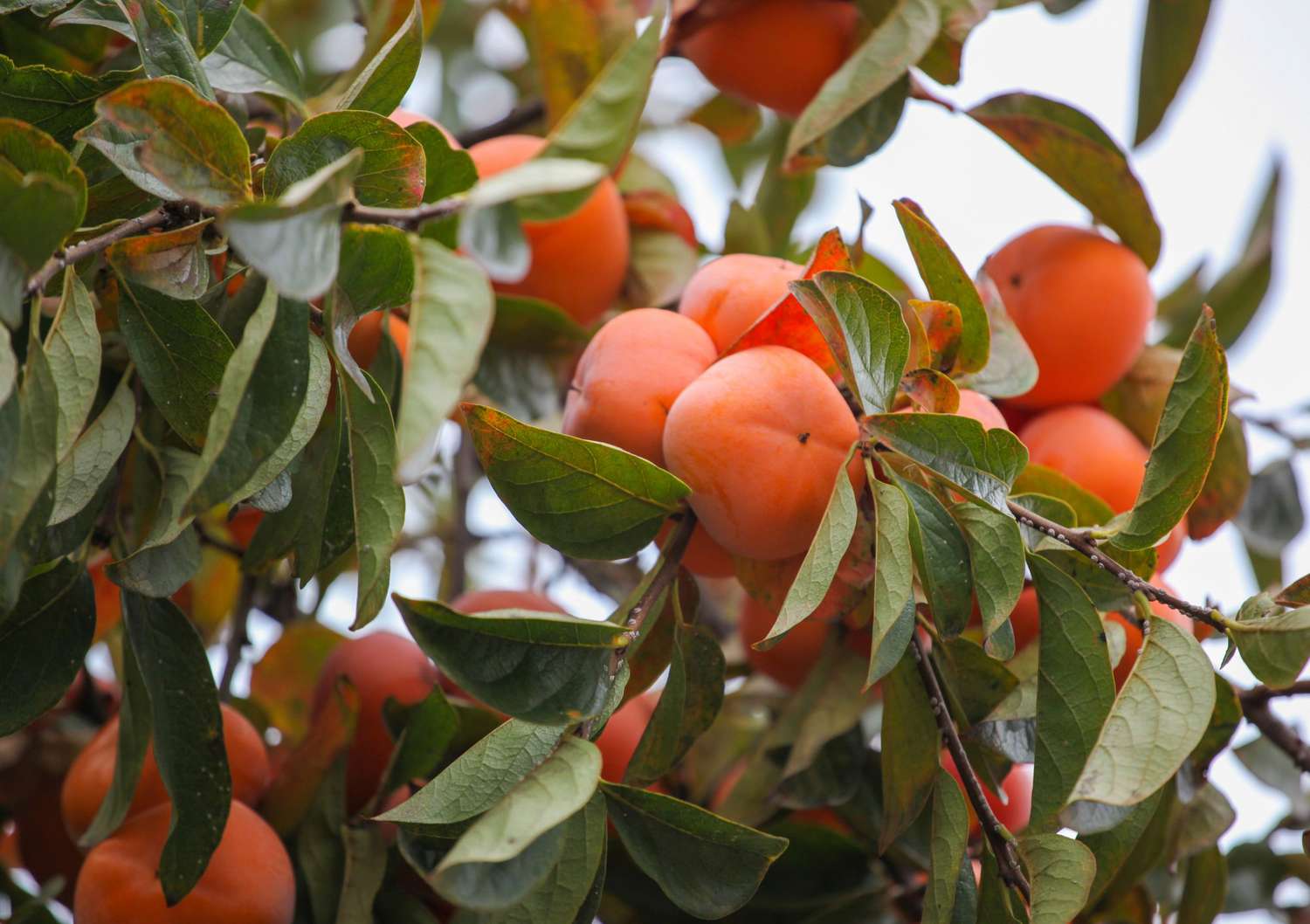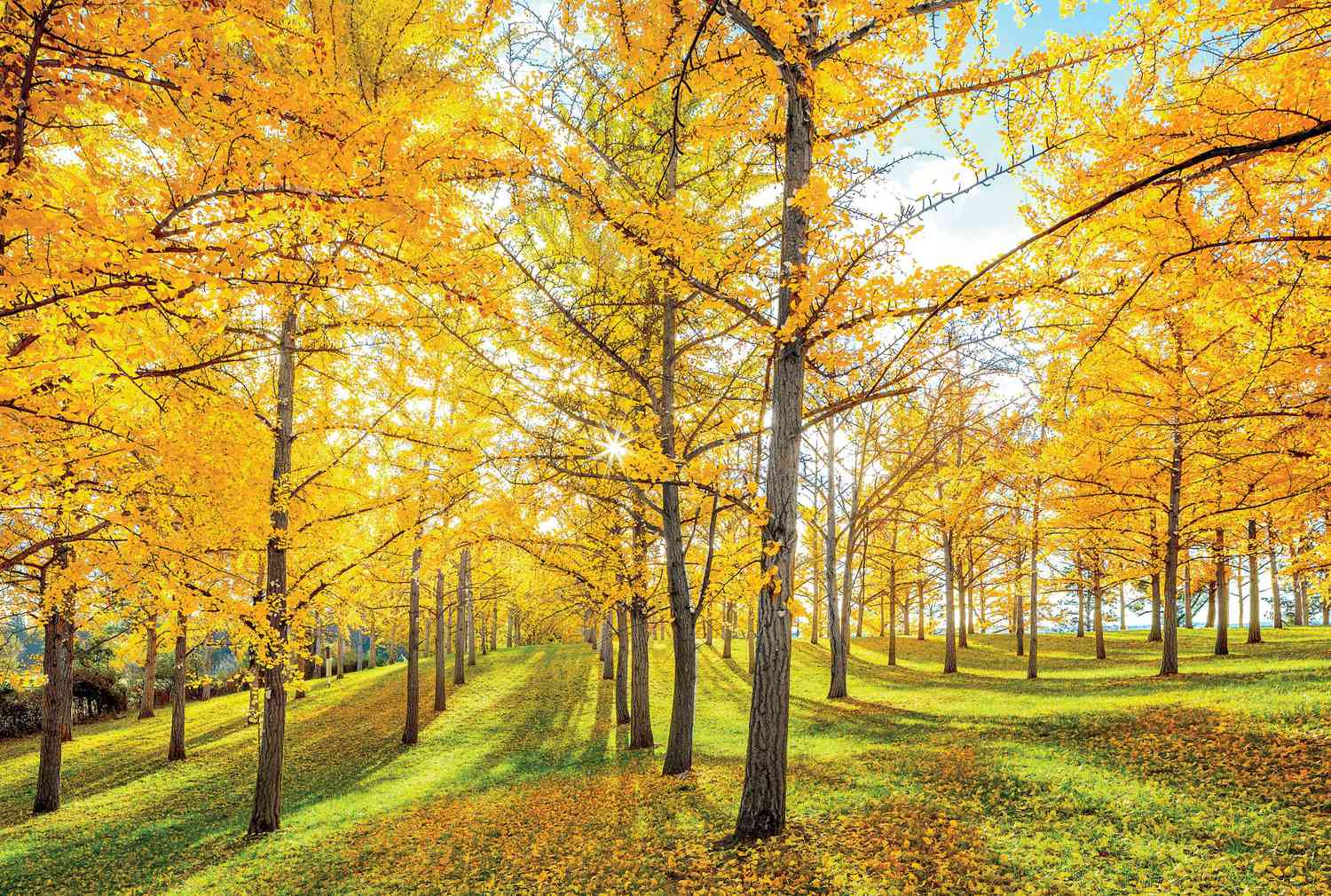Home>Gardening Techniques>Plant Care>Where Do Hickory Trees Grow
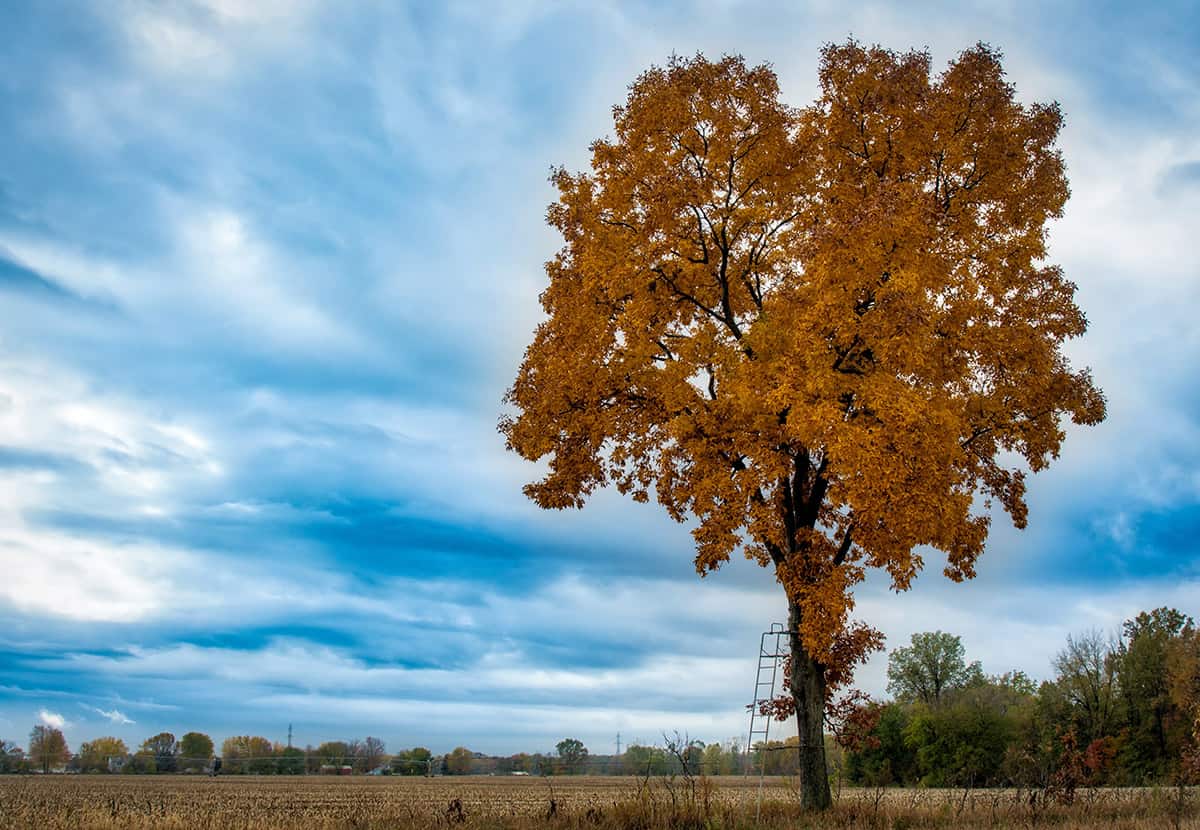

Plant Care
Where Do Hickory Trees Grow
Modified: February 8, 2024
Discover the best plant care tips for hickory trees! Find out where hickory trees grow and how to ensure their proper growth and maintenance.
(Many of the links in this article redirect to a specific reviewed product. Your purchase of these products through affiliate links helps to generate commission for Chicagolandgardening.com, at no extra cost. Learn more)
Table of Contents
- Introduction
- Climate and Soil Requirements for Hickory Trees
- Geographic Distribution of Hickory Trees
- Hickory Trees in North America
- Hickory Trees in Europe
- Hickory Trees in Asia
- Common Species of Hickory Trees
- Importance of Hickory Trees
- Uses of Hickory Trees
- Conservation and Management of Hickory Trees
- Conclusion
Introduction
Hickory trees (genus Carya) are majestic and sturdy trees that belong to the walnut family. Known for their strong, durable wood, delicious nuts, and beautiful foliage, hickory trees are a valuable and cherished part of many landscapes. Whether you’re a plant enthusiast, a homeowner looking to add some shade to your property, or a nature lover interested in the ecological importance of trees, understanding the growth requirements and distribution of hickory trees is essential.
Hickory trees are native to North America, Europe, and Asia, but they are most commonly associated with the eastern and central parts of the United States. These trees are known for their large stature, with some species reaching heights of up to 100 feet. They have a strong taproot system that allows them to withstand harsh weather conditions and adapt to various soil types.
In this article, we will explore the climate and soil requirements for hickory trees, their geographic distribution, the different species of hickory trees, their importance and uses, as well as the conservation and management practices associated with these trees.
So, whether you’re someone who is considering planting a hickory tree on your property or simply interested in expanding your knowledge of plant care and tree diversity, let’s delve into the world of hickory trees and discover the wonders these trees have to offer.
Climate and Soil Requirements for Hickory Trees
Hickory trees are remarkably adaptable and can thrive in a range of climates and soil conditions. However, they do have certain preferences that can help enhance their growth and overall health. Understanding these requirements is crucial for successfully cultivating hickory trees in your area.
In terms of climate, hickory trees prefer regions with a temperate climate. They are known to withstand both hot summers and cold winters, making them suitable for a variety of regions. However, they do best in areas with distinct seasons, as this allows them to undergo the necessary dormancy period during the winter months. This dormancy helps prepare the tree for healthy growth in the following spring.
When it comes to soil, hickory trees show a preference for well-drained soils. They thrive in loamy soils that are rich in organic matter, as these types of soils provide the necessary nutrients for optimal growth. However, hickory trees can also tolerate other soil types, including sandy or clay soils, as long as they are not excessively compacted or waterlogged. Proper drainage is crucial to avoid stagnant water, which can lead to root rot and other issues.
Another important consideration for hickory tree growth is pH levels. These trees prefer slightly acidic to neutral soils, with a pH range of 6.0 to 7.0. It is recommended to conduct a soil test to determine the pH levels of your soil and make any necessary amendments to bring it within the desired range.
In addition to climate and soil preferences, hickory trees also require ample sunlight to thrive. They are considered to be full-sun trees, meaning they require at least six hours of direct sunlight each day. Planting them in a location where they can receive sufficient sunlight will promote healthy foliage, nut production, and overall tree vigor.
It is worth noting that while hickory trees are adaptable, certain species may have specific climate and soil requirements. For example, the pecan hickory (Carya illinoinensis) prefers areas with longer growing seasons and well-drained soil, while the shagbark hickory (Carya ovata) can tolerate slightly more moist conditions. It is important to research the specific species you plan to cultivate to ensure you are providing the ideal conditions for their growth.
By understanding the climate and soil preferences of hickory trees, you can create an environment that promotes their vitality and longevity. Whether you are planting hickory trees for their aesthetic appeal, their delicious nuts, or their valuable timber, providing the right conditions will contribute to their overall health and success.
Geographic Distribution of Hickory Trees
Hickory trees have a wide geographic distribution, being native to North America, Europe, and Asia. While they can be found in various regions across the globe, their distribution is more concentrated in specific areas where they thrive under optimal environmental conditions.
In North America, hickory trees are most commonly associated with the eastern and central parts of the United States, particularly in states such as Missouri, Kentucky, Indiana, and Tennessee. These regions provide the ideal climate and soil conditions for hickory tree growth. The abundance of hickory trees in these areas has made them an iconic part of the American landscape.
Moving beyond North America, hickory trees can also be found in certain parts of Europe. The native species found in Europe is the European or common hickory (Carya ovata). These trees are distributed mainly in the eastern parts of Europe, including countries like Hungary, Romania, and Ukraine. However, they are not as widespread as in North America.
In Asia, hickory trees have a more diverse distribution. They can be found in countries such as China, India, Japan, and Korea, among others. In China, for example, the pecan hickory (Carya illinoinensis) is of significant economic importance due to its prized nuts. Different species of hickory trees in Asia have adapted to the specific climatic and soil conditions of their respective regions.
It is important to note that while hickory trees have a wide distribution, they may not be present in every region within these continents. Their presence is influenced by factors such as climate suitability, local habitat conditions, and human intervention. For example, hickory trees may have been introduced to certain areas outside of their native range for cultivation or ornamental purposes.
The geographic distribution of hickory trees highlights their adaptability to various environments, as well as the cultural and economic significance they hold in different regions. Whether they are thriving in the forests of North America, the landscapes of Europe, or the forests of Asia, hickory trees play an important role in biodiversity and ecosystem functioning.
As a plant enthusiast or someone interested in preserving tree diversity, understanding the geographic distribution of hickory trees can help you appreciate the unique environments in which they grow and the special places they call home.
Hickory Trees in North America
North America is home to a diverse range of hickory tree species, which are cherished for their ecological, economic, and cultural importance. Hickory trees have a rich history in this region and continue to play a significant role in the landscape and communities.
Among the most prominent species of hickory trees in North America are the shagbark hickory (Carya ovata), the pignut hickory (Carya glabra), the shellbark hickory (Carya laciniosa), and the pecan hickory (Carya illinoinensis). Each species has its own distinct characteristics and uses.
The shagbark hickory is easily recognized by its shaggy bark, which peels away in long strips. This tree is highly valued for its strong, durable wood, making it a popular choice for furniture, tool handles, and flooring. The sweet, edible nuts of the shagbark hickory are also sought after for their rich flavor and nutritional value.
The pignut hickory is known for its hard, dense wood, which is prized for its strength and resilience. It is commonly used for construction, furniture, and tool handles. The small fruits produced by the pignut hickory are bitter and not widely consumed, but they serve as an important food source for wildlife, including squirrels and birds.
The shellbark hickory is named for its distinctive thick and flaky bark. This tree is highly valued for both its timber and its delicious nuts. The wood of the shellbark hickory is used in construction, while the nuts are consumed by humans and wildlife alike. The nuts are often used in baking and are known for their rich, sweet flavor.
The pecan hickory, as the name suggests, is known for its prized nut, the pecan. Pecans are widely consumed and are a popular ingredient in sweet and savory dishes. Pecan hickory trees are primarily cultivated for their nuts, which are highly sought after for their taste and nutritional benefits. They are grown in orchards throughout the southern United States, particularly in states like Texas, Georgia, and Louisiana.
Hickory trees have deep roots in North American history and culture. Native American tribes used various parts of the tree for food, medicine, and tools. The wood was a valuable resource for early settlers, who used it for building and cooking. Today, hickory trees continue to be cherished for their aesthetic appeal, natural shade, and the enjoyment they bring to outdoor spaces.
The presence of hickory trees in North America contributes to the overall biodiversity and ecological functioning of forests. They provide habitat and food sources for a variety of wildlife, including birds, mammals, and insects. Additionally, their deep taproots help prevent soil erosion and improve soil structure.
Whether you’re exploring a forest trail, enjoying the shade of a hickory tree in your backyard, or savoring the taste of hickory-smoked food, hickory trees are an integral part of the North American landscape and culture.
Hickory Trees in Europe
Hickory trees have a notable presence in certain parts of Europe, contributing to the region’s natural beauty and diversity. The European or common hickory (Carya ovata) is the native species of hickory found in Europe, with its distribution concentrated in the eastern parts of the continent.
In Europe, hickory trees are primarily found in countries such as Hungary, Romania, Ukraine, and parts of the Balkans. These regions provide the necessary climate and soil conditions for hickory tree growth. The European hickory has adapted to the specific environmental factors present in these areas, allowing it to thrive and contribute to the local ecosystems.
The European hickory is known for its strong and durable wood, which has been used traditionally for various purposes, including furniture making, construction, and tool handles. The wood is valued for its strength and resilience, and it has a beautiful grain pattern that adds to its appeal.
While the nuts produced by European hickory trees are edible, they are less commonly consumed compared to other tree nut varieties. The nuts are smaller in size and have a milder flavor compared to their North American counterparts. Nonetheless, they still serve as an important food source for wildlife, contributing to the ecological balance of the region.
In addition to its economic and ecological significance, the European hickory also holds cultural importance in certain areas of Europe. Traditional crafts, such as wood carving and basket weaving, often make use of hickory wood due to its strength and workability. Hickory trees are also valued for their aesthetic appeal, adding beauty to parks, gardens, and natural landscapes.
However, it is worth mentioning that the presence of hickory trees in Europe is not as widespread as in North America. The European hickory’s distribution is more limited and localized due to factors such as climate suitability and historical land use practices. Nevertheless, where hickory trees do occur in Europe, they make a valuable contribution to the local biodiversity and serve as a reminder of the tree’s global significance.
The presence of hickory trees in Europe not only showcases the tree’s adaptability but also adds to the cultural and ecological diversity of the region. As a nature enthusiast or someone interested in exploring European forests and landscapes, encountering a hickory tree can be a unique and memorable experience.
Hickory Trees in Asia
Hickory trees have a significant presence in various parts of Asia, contributing to the region’s biodiversity and serving both ecological and economic purposes. Different species of hickory trees can be found in countries such as China, India, Japan, Korea, and others, each with its own unique characteristics and importance.
In China, hickory trees are particularly noteworthy. The country is home to several species of hickory, including the pecan hickory (Carya illinoinensis). Pecans are highly valued for their delicious nuts, which are widely consumed and exported to other regions. China’s hickory orchards make a significant contribution to the global pecan industry. Additionally, hickory wood from China, known for its superior quality, is used in various industries, including furniture making, construction, and musical instrument production.
Hickory trees also have a presence in other Asian countries. In India, for example, hickory trees are found in parts of the Himalayan region, where they are valued for their timber and the edible nuts they produce. In Japan, certain species of hickory, such as Carya cordiformis and Carya laciniosa, are appreciated for their aesthetic appeal and are often planted in parks and gardens.
The ecological importance of hickory trees in Asia cannot be overlooked. These trees provide valuable habitat and food sources for a wide variety of wildlife, including birds, mammals, and insects. The nuts produced by hickory trees are consumed by many animals, contributing to the overall biodiversity of the region.
In addition to their ecological significance, hickory trees also have cultural importance in Asia. In China and other Asian countries, the nuts are used in traditional cuisine, adding a unique flavor to a variety of dishes. The wood of hickory trees is also utilized in traditional crafts and woodworking, highlighting the tree’s versatility and value in local cultures.
While the distribution of hickory trees in Asia may not be as extensive as in North America, the presence of these trees in the region showcases their adaptability to different climates and soils. They add to the natural beauty of Asian landscapes and serve as a valuable resource for local communities.
Whether you’re exploring the forests of China, witnessing the hickory orchards in India, or appreciating the hickory trees in Japanese gardens, encountering hickory trees in Asia offers a glimpse into the diverse and fascinating world of plant life in the region.
Common Species of Hickory Trees
Hickory trees (genus Carya) encompass a number of species, each with its own distinctive features and characteristics. These trees are prized for their strong, durable wood and delicious nuts. Let’s explore some of the common species of hickory trees found around the world.
1. Shagbark Hickory (Carya ovata): Native to North America, the shagbark hickory is known for its distinctive, peeling bark that hangs in long, shaggy strips. This large tree can reach heights of up to 80 feet and is prized for its attractive foliage and flavorful nuts.
2. Pignut Hickory (Carya glabra): Also native to North America, the pignut hickory is named for its small, bitter nuts that are less commonly consumed by humans but serve as an important food source for wildlife. The tree’s hard, dense wood is highly valued for its strength and durability.
3. Shellbark Hickory (Carya laciniosa): Known for its thick and flaky bark, the shellbark hickory is a majestic tree that can grow up to 100 feet tall. It is prized for its timber and its large, sweet nuts, which are popular among both humans and wildlife.
4. Mockernut Hickory (Carya tomentosa): The mockernut hickory is a medium to large-sized tree native to North America. It gets its name from its incredibly hard, thick-shelled nuts that are difficult to crack. The wood of the mockernut hickory is used in various applications, including furniture and tool handles.
5. Pecan Hickory (Carya illinoinensis): Widely known for its delicious and buttery pecan nuts, the pecan hickory is native to North America. It is primarily cultivated for its nuts, which are highly prized for their taste and nutritional value. Pecans are used in a variety of culinary dishes and desserts, making this species highly valued and sought after.
6. Europe Hickory (Carya ovata): Found primarily in eastern parts of Europe, the Europe hickory is also known as the common hickory. Like its North American counterparts, it has a strong, durable wood and produces edible nuts, although they may be smaller in size compared to other hickory species.
These are just a few examples of the many hickory tree species found worldwide. Each species offers unique characteristics, wood qualities, and culinary benefits. Whether you’re planting a hickory tree for its timber, nuts, or simply to add beauty to your landscape, understanding the different species can help you choose the right one for your needs and preferences.
Importance of Hickory Trees
Hickory trees play a vital role in both ecological and human environments, offering a range of benefits and contributions. Here are some key reasons why hickory trees are important and valued:
1. Ecosystem Support: Hickory trees provide crucial habitat and food sources for a variety of wildlife, including birds, mammals, and insects. The nuts produced by hickory trees are a valuable food source for many animals, contributing to the overall biodiversity and ecological balance of the surrounding environment.
2. Soil Conservation: The deep taproots of hickory trees help improve soil structure and prevent erosion. These extensive root systems anchor the soil, reducing the risk of soil loss during heavy rainfall or winds. By keeping the soil intact, hickory trees play a crucial role in maintaining the health of ecosystems and preserving valuable farmland.
3. Timber and Wood Products: Hickory wood is highly valued for its strength, durability, and unique grain patterns. It is used in various industries, including furniture production, construction, flooring, tool handle manufacturing, and even musical instruments. The timber from hickory trees provides a sustainable and renewable resource that supports local economies and craftsmanship.
4. Nut Production: Hickory nuts are not only delicious but also offer numerous nutritional benefits. They are a good source of healthy fats, protein, fiber, and various vitamins and minerals. The nuts are consumed by both humans and wildlife, making them an important food resource for sustaining diverse ecosystems and providing nourishment for animals and people alike.
5. Aesthetic and Recreational Value: Hickory trees are often treasured for their aesthetic appeal, adding beauty and shade to landscapes, parks, and gardens. Their vibrant foliage, unique bark patterns, and tall statures make them a visually pleasing addition to any environment. Hickory trees also provide shade for outdoor activities, such as picnics, hiking, and camping, enhancing the recreational value of natural spaces.
6. Cultural Significance: Hickory trees have cultural importance and historical significance in various regions. They have been used by indigenous communities for centuries, providing sustenance, materials for traditional crafts, and medicinal properties. Hickory trees continue to be valued for their connection to local heritage and their role in preserving cultural traditions.
Understanding the importance of hickory trees helps us appreciate their ecological, economic, and cultural value. By recognizing and preserving these trees, we can ensure the continued benefits they provide to both nature and society.
Uses of Hickory Trees
Hickory trees are highly valued for their versatility, as they offer a wide range of practical and cultural uses. From their wood to their nuts, hickory trees provide valuable resources that benefit both humans and wildlife. Let’s explore some of the key uses of hickory trees:
1. Timber and Wood Products: Hickory wood is known for its strength, durability, and attractive grain patterns, making it highly sought after in various industries. The timber is used in furniture making, cabinetry, flooring, tool handles, sports equipment, and even musical instruments. Its resilience and shock-absorbing properties make it ideal for applications that require strong and sturdy materials.
2. Nut Production: Hickory nuts are a popular edible crop that is widely consumed and appreciated for their delicious flavor. They are used in both sweet and savory dishes, including baked goods, salads, and trail mixes. In addition to their culinary uses, hickory nuts are also a valuable food source for wildlife, including squirrels, birds, and other small mammals.
3. Smoking and Grilling: Hickory wood is renowned for its distinct smoky flavor, making it a favorite choice for smoking and grilling foods. The wood chips or chunks are used to impart a rich and robust flavor to meats, fish, and vegetables, giving them a unique and appetizing taste. Hickory smoke is especially popular in traditional barbecue styles and adds a signature touch to various regional cuisines.
4. Traditional Crafts: Hickory wood has long been favored by craftsmen for its workability and strength. It is used in traditional woodworking projects, such as furniture making, cabinetry, and carvings. The dense and durable nature of hickory wood allows for intricate and detailed craftsmanship, resulting in high-quality and long-lasting finished products.
5. Shade and Landscape Enhancement: Hickory trees are valued for their aesthetic appeal and shade-providing qualities, making them a popular choice for landscaping and outdoor spaces. Their tall stature, vibrant foliage, and unique bark patterns add visual interest and natural beauty to parks, gardens, and residential areas. The dense canopy of hickory trees provides shade, reducing heat buildup and offering a cool retreat during hot summer days.
6. Cultural Significance: Hickory trees have cultural importance in many communities and are often associated with traditional practices and folklore. They have been used for centuries in indigenous cultures for food, medicinal purposes, and crafting. Hickory trees are celebrated in festivals, art, and storytelling, preserving the link between nature and cultural heritage.
The versatile uses of hickory trees make them a valuable and cherished resource. Whether it’s for its strong timber, delicious nuts, distinct flavor in cooking, or the aesthetic appeal it brings to landscapes, hickory trees continue to leave an enduring impact on our daily lives and cultural traditions.
Conservation and Management of Hickory Trees
Conservation and management are essential for the preservation and sustainable use of hickory trees. These practices help ensure the long-term health and survival of hickory populations, as well as the various benefits they provide to ecosystems and human communities. Here are some key considerations in the conservation and management of hickory trees:
1. Habitat Preservation: Protecting the natural habitats where hickory trees grow is vital for their continued existence. This includes conserving forests, woodlands, and other ecosystems where hickory trees play an integral role. Preserving these habitats not only safeguards the hickory trees themselves but also maintains the biodiversity they support and protects the wildlife that depends on them for food and shelter.
2. Reforestation and Restoration: Initiatives to replant and restore hickory tree populations in areas where they have been depleted or lost can help maintain genetic diversity and ecosystem balance. Reforestation efforts may involve planting native hickory tree seedlings in suitable areas or restoring degraded habitats to create optimal conditions for hickory tree growth.
3. Sustainable Harvesting: Hickory trees are a valuable resource, particularly for their timber and nuts. Implementing sustainable harvesting practices ensures that tree populations are not depleted and that the harvest is carried out in a manner that minimizes ecological impact. Selective cutting techniques, adherence to local harvesting regulations, and replanting or natural regeneration of harvested areas are important considerations in sustainable management.
4. Education and Outreach: Educating the public, landowners, and communities about the importance of hickory tree conservation is crucial. Promoting awareness and understanding of hickory trees encourages responsible land management practices, habitat conservation, and the appreciation of hickory trees’ ecological and cultural significance. Outreach programs, workshops, and collaborations with local organizations can help foster a sense of stewardship and collective action.
5. Research and Monitoring: The collection of scientific data on hickory tree populations, genetics, ecology, and responses to environmental changes can inform conservation efforts. Monitoring the health and distribution of hickory trees helps identify threats, assess population trends, and develop targeted management strategies. Collaboration between researchers, land managers, and conservation organizations is key to effectively protect and manage hickory trees.
6. Invasive Species Management: Invasive plant species can compete with native hickory trees, negatively impacting their growth and survival. Implementing measures to control and manage invasive species is crucial for maintaining the health and productivity of hickory tree populations. This can involve methods such as manual removal, chemical control, and promoting the growth of native vegetation to outcompete invasives.
Conservation and management efforts for hickory trees play a vital role in preserving their ecological integrity, sustaining their economic value, and upholding their cultural significance. By implementing sustainable practices, raising awareness, and working collectively, we can ensure the continued presence and benefits of hickory trees for future generations to enjoy.
Conclusion
Hickory trees are remarkable specimens that have captivated humans for centuries. With their towering heights, beautiful foliage, and valuable resources, hickory trees have become integral components of our ecosystems and cultural heritage. From North America to Europe, and Asia, these trees have adapted to various climates and soils, thriving in diverse environments.
Understanding the requirements and distribution of hickory trees allows us to appreciate their significance, both ecologically and economically. These trees provide essential habitat and food for wildlife, contribute to soil conservation, and offer valuable timber and delicious nuts. Hickory trees have cultural significance as well, with their wood being used in traditional crafts and their presence intertwined with local histories.
However, the conservation and management of hickory trees are paramount for their continued survival and sustainability. Preserving their habitats, promoting sustainable practices, and fostering awareness are essential steps to ensure the protection of these valuable resources for future generations.
As hickory trees continue to grace our landscapes and enrich our lives, let us embrace their presence, celebrate their diversity, and strive to be responsible stewards of these remarkable trees. By nurturing hickory trees and fostering a harmonious coexistence, we can enjoy their multitude of benefits and ensure a vibrant and healthy natural world.
